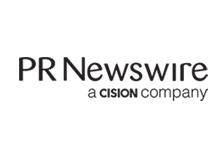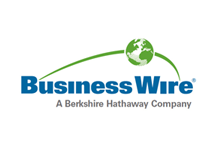Distributed Buoyancy Modules Market Size to Reach US$ 91.6 Million in 2025, Says Stratview Research
DETROIT, May 6, 2020 /PRNewswire/ -- Stratview Research announces the launch of a new research report on Distributed Buoyancy Modules Market by Application Type (Riser Systems, Flowlines, Umbilical, Wind Farm Cables, and Others), by Depth Type (Subsea, Subsurface, and Surface), by Material Type (Synthetic Foam, Polyurethane Foam, and Others), and by Region (North America, Europe, Asia-Pacific, The Middle East & Africa, and Latin America), Trend, Forecast, Competitive Analysis, and Growth Opportunity: 2020-2025.
https://mma.prnewswire.com/media/660595/Stratview_Research_Logo.jpg
This strategic assessment report, from Stratview Research, provides a comprehensive analysis that reflects today's distributed buoyancy modules market realities and future possibilities for the forecast period of 2020 to 2025. The report segments and analyses the market in the most comprehensive manner to provide a panoramic view of the market. The vital data/information provided in the report can play a crucial role for market participants as well as investors in the identification of low-hanging fruits available as well as formulate growth strategies.
Distributed Buoyancy Modules Market: Highlights from the Report
Buoyancy is an upward thrust exerted by fluid opposing the weight of an immersed object. This upward thrust is equal to the weight of the water displaced by the immersed object. Buoyancy products are objects fabricated to apply these solutions. Distributed buoyancy modules are discrete buoyancy clamped to umbilical, risers, or pipelines to hold them in specific geometric configurations with an aim to prevent overutilization of the system. Distributed buoyancy modules are attached to the equipment through clamps, which makes it easy and quick to install. They are widely used in SURF application in offshore oil & gas production and offshore wind farm cables.
In 2014, when oil price began plummeting, offshore exploration activity hobnailed in parallel, falling nearly 40% before finding its bottom in 2016-2017. It led to an approximate plunge of 60% in offshore exploration expenditure during 2014-2017, mainly factored by the reduced cashflow, growth of US shale gas production, and reduction in offshore acreage awarded. But then came 2018, the year of transition of the global offshore oil & gas industry with an increase in the well count since the start of the downturn. In 2019, an increase of 8%-10% was witnessed in the number of offshore exploration wells drilled, compared to 2018.
The oil & gas industry stakeholders were predicting the year 2020 as another remarkable year for exploration as about 45 countries were expected to launch more than 50 lease rounds out of which 60% were in offshore areas. But the outbreak of COVID-19 in China, then the rapid spread across the world flipped the table entirely with gloomy market conditions. The prices of crude oil declined from $60 per barrel at the start of the year to $20 per barrel in the month of April in the wake of the steep fall in crude oil demand followed by the collapse of the three-year-old pact between Russia and Saudi Arabia. As per Rystad Energy, there will be a plunge of almost 60% in newly licensed offshore oil & gas exploration acreage this year. Similarly, the firm is also expecting a massive decline of about 68% in 2020 from 2019 in oil & gas project sanctioning.
The demand for distributed buoyancy modules is largely dependent on the health of offshore oil & gas investments. It is anticipated that the market for distributed buoyancy modules will plummet in 2020, mainly because of nose-diving offshore oil & gas investments across regions. However, the rate of decline will not be that huge as major distributed buoyancy module suppliers have piled many contracts, which may help them to survive in this breath-taking market environment. However, they have been expecting a steep decline in the year 2021. The market is estimated to rebound from 2022 onwards, reaching an estimated value of US$ 91.6 million in 2025.
Click Here and Run Through the TOC of the Report: https://www.stratviewresearch.com/toc/827/distributed-buoyancy-module-market.html
Based on the application type, riser system is expected to remain the largest segment of the market during the forecast period. Continuous efforts of oil & gas companies to obtain maximum efficiency, reduce break-even cost for offshore oil & gas production, and increase deepwater and ultra-deepwater oil & gas production are driving the demand for distributed buoyancy modules in riser systems. However, wind farm cable is estimated to be the fastest-growing application of the market during the same period. High focus on development of renewable energy by the leading economies with increased attention towards offshore wind energy is primarily driving the demand in this segment. Reduction in the production cost of offshore wind turbines with the development of more efficient, larger turbines, and government initiatives to boost renewable energy are attracting companies to invest in offshore wind energy, which, in turn, is propelling the demand for distributed buoyancy modules for wind farm cable applications.
Based on the material type, synthetic foam is expected to remain the dominant material during the forecast period. Distributed buoyancy modules are mostly used for deepwater and ultra-deepwater applications. High buoyancy per volume and extremely low water absorption properties make synthetic foam the first preference for ultra-deepwater and deepwater applications. Polyurethane foam is estimated to be the fastest-growing material type during the same period. Most of the offshore wind farms operate in shallow water and uses polyurethane-foam based distributed buoyancy modules for cable applications. Rapidly increasing offshore wind installations are generating a huge demand for polyurethane-based modules.
Register Here for a Free Sample of the Detailed Report: https://www.stratviewresearch.com/Request-Sample/827/distributed-buoyancy-module-market.html
Despite severely hit European oil & gas industry because of the COVID-19 pandemic, it seems that the region will remain efficacious in maintaining its lead in the distributed buoyancy modules market in the coming five years, mainly due to the flourishing offshore wind energy in the key countries, such as the UK and Germany. It is anticipated that the demand for DBMs may stall for the short-term in the region with the expected recovery from 2022 onwards. Scheduled new offshore wind turbine installations and increasing activities in deepwater and ultra-deepwater oil fields in the North Sea will contribute towards a healthy demand generation of distributed buoyancy modules in the region in the long run.
North America is expected to be the fastest-growing market for distributed buoyancy modules during the forecast period. Offshore wind production in the USA is expected to commence from 2022 as production cost has been reduced by using more efficient and bigger turbines. As per GWEC, around 5.8 GW of offshore wind energy installations are expected to be installed by 2024 in North America, which will generate a healthy demand in the region. Also, the USA is the largest producer of crude oil in the world, which further aids the demand for these modules in the region.
The supply chain of this market comprises raw material suppliers, distributed buoyancy modules manufacturers, distributors, and end users (such as oil & gas companies, and offshore renewable energy firms). Key players in the distributed buoyancy modules market are Trelleborg AB, Balmoral Offshore Engineering, Matrix Composites & Engineering Limited, Advance Insulation, Fendercare Marine, DeepWater Buoyancy, Inc., Bardot Group, Forum Energy Technologies, Inc., Floatex S.R.L, and ALSEAMER.
Report Features
This report provides market intelligence in the most comprehensive way. The report structure has been kept such that it offers maximum business value. It provides critical insights on the market dynamics and will enable strategic decision making for the existing market players as well as those willing to enter the market. The following are the key features of the report:
-- Market structure: Overview, industry life cycle analysis, supply chain
analysis.
-- Market environment analysis: Growth drivers and constraints, Porter's
five forces analysis, SWOT analysis.
-- Market trend and forecast analysis.
-- Market segment trend and forecast.
-- Competitive landscape and dynamics: Market share, product portfolio,
product launches, etc.
-- Attractive market segments and associated growth opportunities.
-- Emerging trends.
-- Strategic growth opportunities for the existing and new players.
-- Key success factors.
This report studies the distributed buoyancy modules market and has segmented the market in four ways, keeping in mind the interest of all the stakeholders across the value chain. Following are the four ways in which the market is segmented:
Distributed Buoyancy Modules Market, By Application Type:
-- Riser Systems (Regional Analysis: North America, Europe, Asia-Pacific,
the Middle East & Africa, and Latin America)
-- Flowlines (Regional Analysis: North America, Europe, Asia-Pacific, the
Middle East & Africa, and Latin America)
-- Umbilical (Regional Analysis: North America, Europe, Asia-Pacific, the
Middle East & Africa, and Latin America)
-- Wind Farm Cables (Regional Analysis: North America, Europe,
Asia-Pacific, the Middle East & Africa, and Latin America)
-- Others (Regional Analysis: North America, Europe, Asia-Pacific, the
Middle East & Africa, and Latin America)
Distributed Buoyancy Modules Market, By Depth Type:
-- Subsea (Regional Analysis: North America, Europe, Asia-Pacific, the
Middle East & Africa, and Latin America)
-- Subsurface (Regional Analysis: North America, Europe, Asia-Pacific, the
Middle East & Africa, and Latin America)
-- Surface (Regional Analysis: North America, Europe, Asia-Pacific, the
Middle East & Africa, and Latin America)
Distributed Buoyancy Modules Market, By Material Type:
-- Synthetic Foam (Regional Analysis: North America, Europe, Asia-Pacific,
the Middle East & Africa, and Latin America)
-- Polyurethane Foam (Regional Analysis: North America, Europe,
Asia-Pacific, the Middle East & Africa, and Latin America)
-- Others (Regional Analysis: North America, Europe, Asia-Pacific, the
Middle East & Africa, and Latin America)
Distributed Buoyancy Modules Market, By Region:
-- North America (Country Analysis: The USA and Canada)
-- Europe (Country Analysis: Norway, The UK, The Netherlands, Denmark,
Russia, and Rest of Europe)
-- Asia-Pacific (Country Analysis: China, Malaysia, Indonesia, Vietnam, and
Rest of the Asia-pacific)
-- The Middle East & Africa (Sub-Region Analysis: The Middle East and
Africa)
-- Latin America (Country Analysis: Brazil, Mexico, and Rest of Latin
America)
Stratview Research has several high value market reports in the oil & gas industry. Please refer to the following link to browse through our reports:
https://www.stratviewresearch.com/market-reports/Oil-Gas.html
Other related report from Stratview Research:
Subsea Buoyancy Market by End-Use Industry Type (Oil & Gas, Drilling & Mining, Oceanography, Technology, Renewable Energy, and Others), by Function Type (Buckle Mitigation & Tension Reduction, Support Arch & Uplift, Mooring, and Others), by Application Type (SURF, Drill Riser, Mooring System, ROV/AUV, Installation, and Others), by Material Type (Synthetic Foam, Polyurethane, and Others), and by Region (North America, Europe, Asia-Pacific, The Middle East & Africa, and Latin America), Trend, Forecast, Competitive Analysis, and Growth Opportunity: 2020-2025.
About Stratview Research
Stratview Research is a global market intelligence firm providing wide range of services including syndicated market reports, custom research and sourcing intelligence across industries, such as Advanced Materials, Aerospace & Defense, Automotive & Mass Transportation, Consumer Goods, Construction & Equipment, Electronics and Semiconductors, Energy & Utility, Healthcare & Life Sciences, and Oil & Gas.
We have a strong team of industry veterans and analysts with an extensive experience in executing custom research projects for mid-sized to Fortune 500 companies, in the areas of Market Assessment, Opportunity Screening, Competitive Intelligence, Due Diligence, Target Screening, Market Entry Strategy, Go to Market Strategy, and Voice of Customer studies.
Stratview Research is a trusted brand globally, providing high quality research and strategic insights that help companies worldwide in effective decision making.
For enquiries, please contact:
Stratview Research
E-mail: sales@stratviewresearch.com
Direct: +1-313-307-4176
View original content:http://www.prnewswire.com/news-releases/distributed-buoyancy-modules-market-size-to-reach-us-91-6-million-in-2025--says-stratview-research-301053970.html
SOURCE Stratview Research



